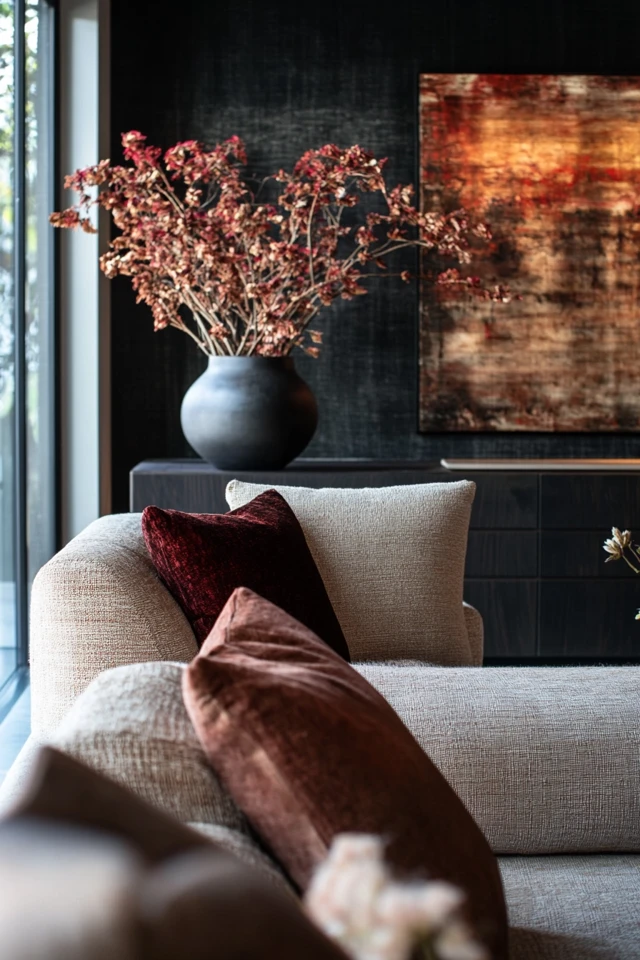Introduction
Contrast is one of the most powerful tools in interior design. By intentionally combining opposing elements—light and dark, rough and smooth, modern and traditional—you can create spaces that are dynamic, visually captivating, and full of personality. Contrasts add depth and drama, ensuring that every corner of your home feels intentional and engaging.
I remember the first time I truly understood the art of contrast. I was redecorating my living room and had settled on an all-neutral palette of whites and creams. While it looked polished, it felt flat and uninspiring. On a whim, I added a deep navy armchair and a black metal coffee table. Suddenly, the room came alive. The interplay between the light and dark tones gave the space dimension and balance, transforming it into a cozy yet striking retreat.
Designing with contrasts doesn’t have to mean bold opposites—it’s about finding harmony in the unexpected. Whether you’re pairing soft, plush textures with industrial metals or juxtaposing vibrant colors against muted tones, contrasts breathe life into a space. In this guide, I’ll show you how to master the art of contrast to create rooms that feel fresh, balanced, and unforgettable.
The Perfect Design for You
Designing with contrasts is ideal for anyone who wants to add energy, depth, and personality to their home. Whether you’re working with a minimalist palette or a maximalist collection of patterns, contrast can bring balance and coherence to your design.
Imagine a dining room where a rustic wooden table sits beneath a modern, sculptural chandelier. The warmth of the wood contrasts beautifully with the sleekness of the metal fixture, creating a space that feels both grounded and sophisticated. Or picture a bedroom where soft, flowing curtains offset the angular lines of a modern platform bed. These contrasts create a sense of balance, making the room feel intentional and layered.
The beauty of contrast is its versatility—it works in every design style, from traditional to contemporary. By thoughtfully pairing opposites, you can create spaces that are as functional as they are visually compelling.
Picture Gallery
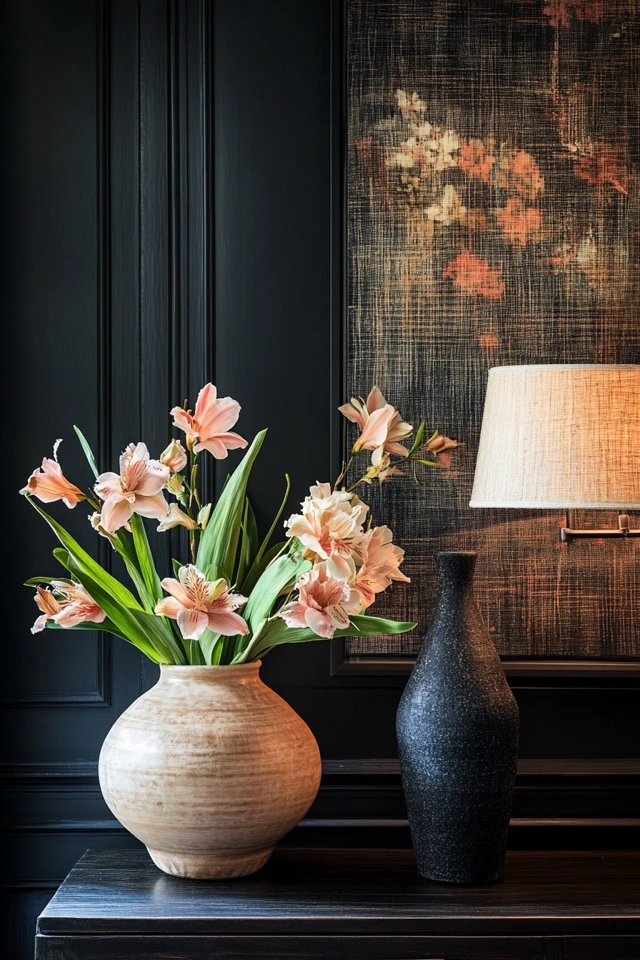
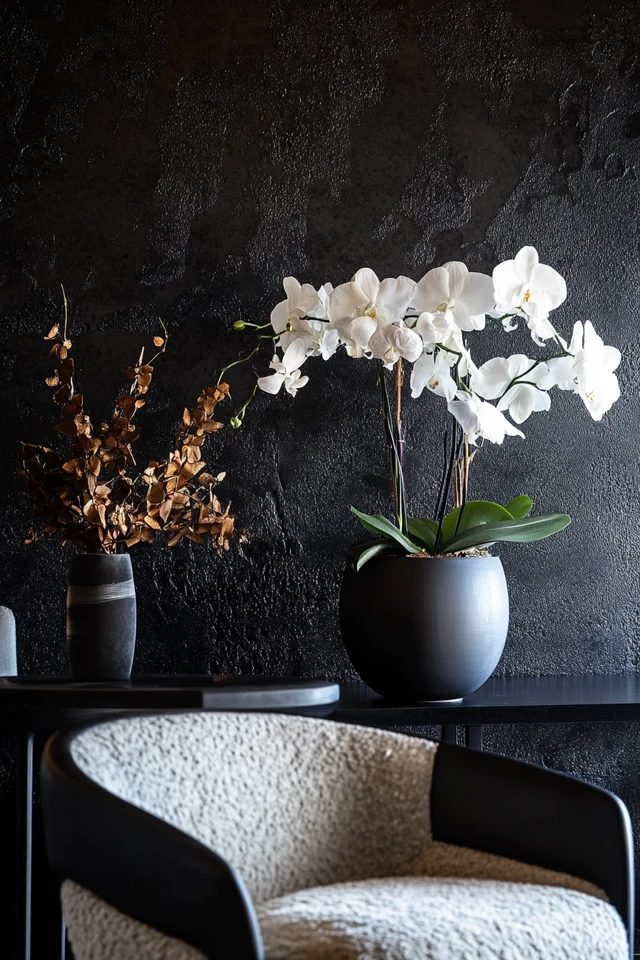
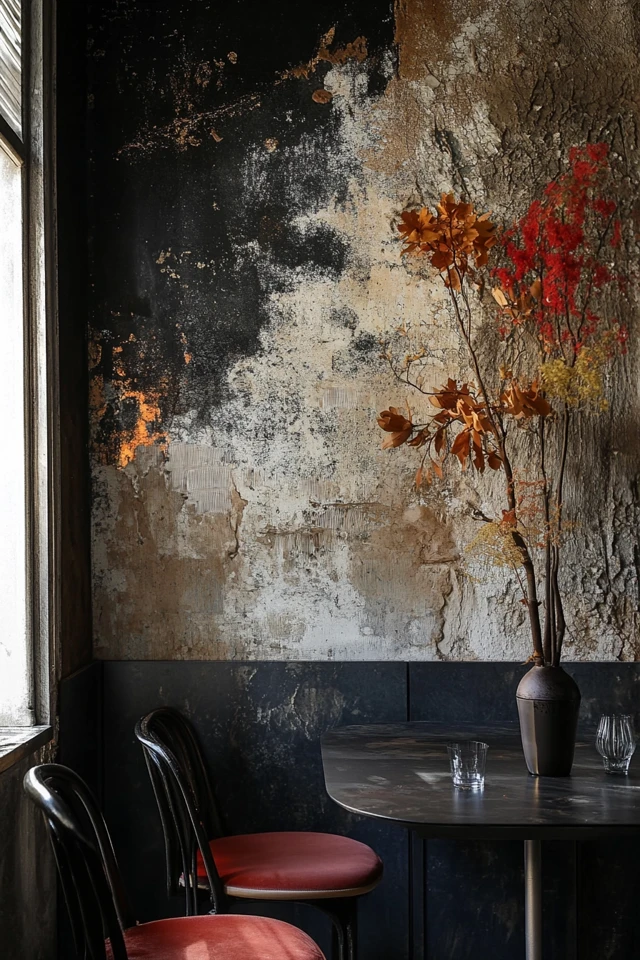
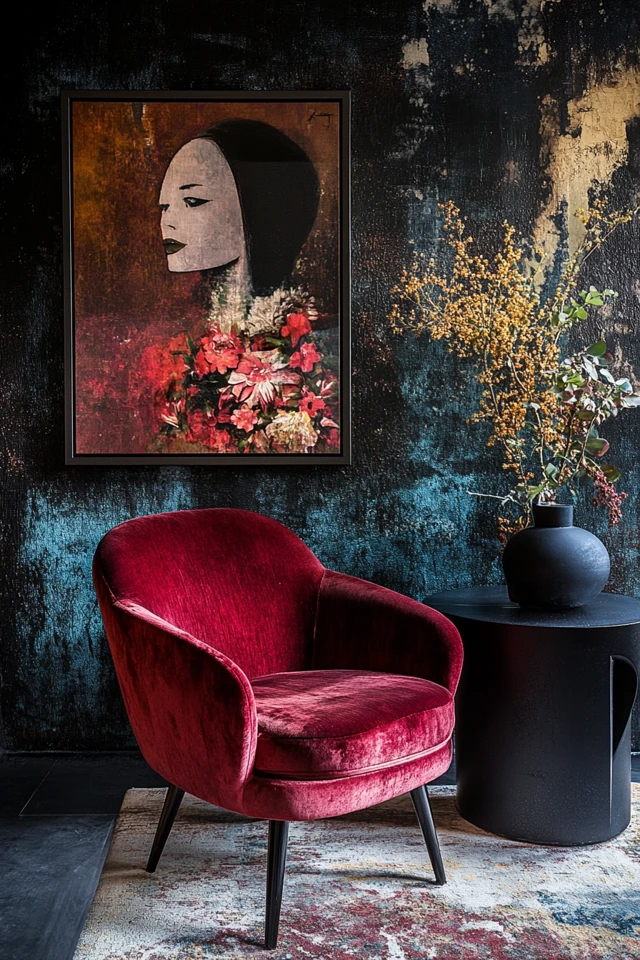
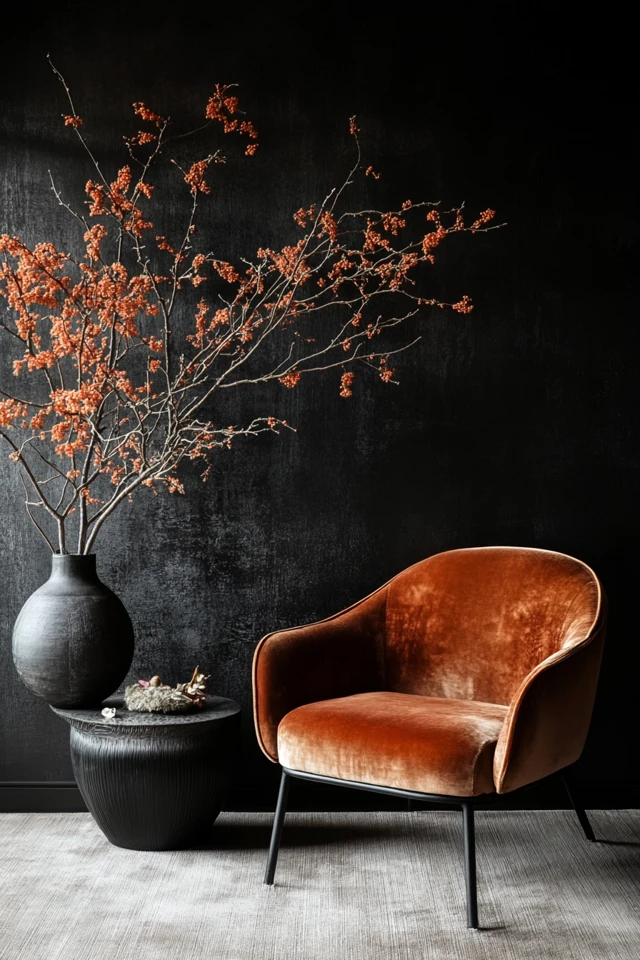
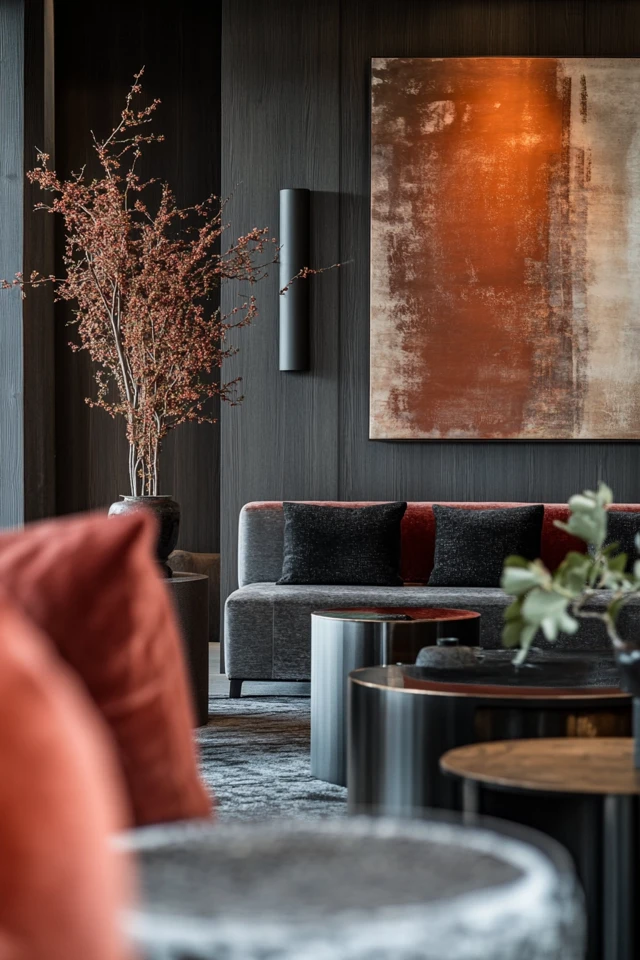
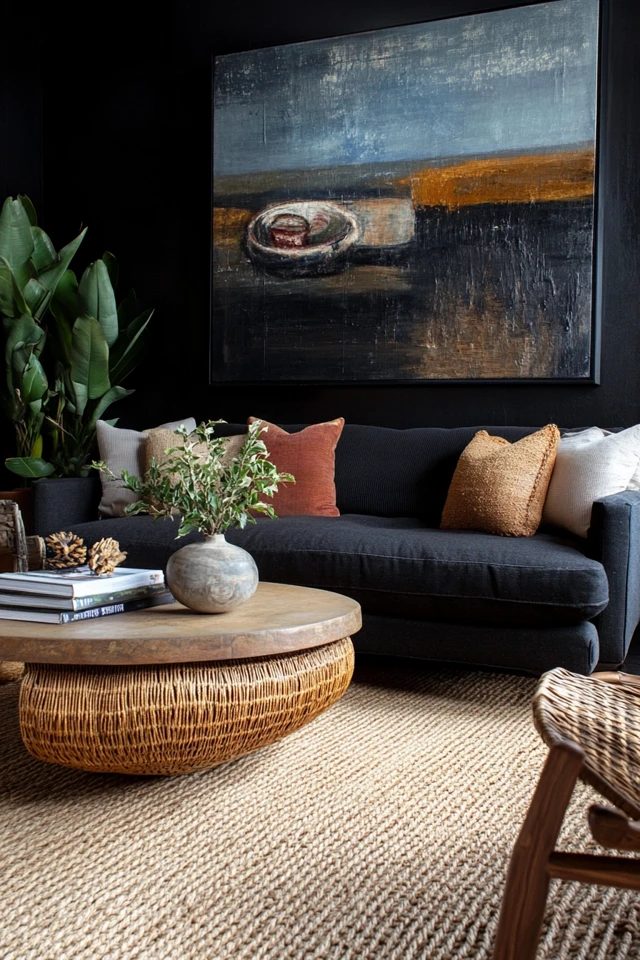
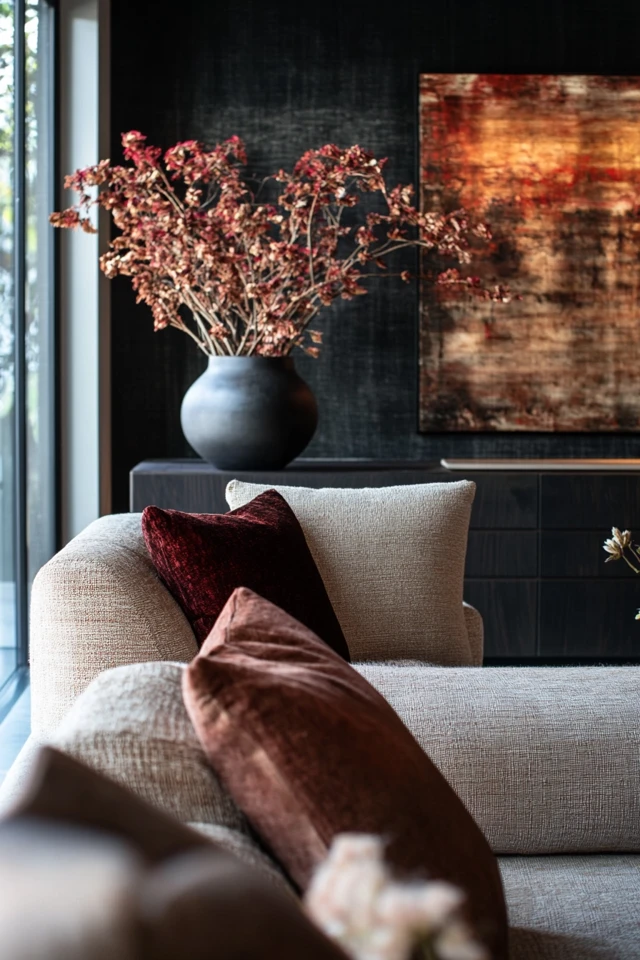
Why These Key Elements Work So Well Together
Contrast works because it draws the eye, adds depth, and creates a sense of balance. Here’s why these elements are so effective in interior design:
- Visual Interest: Contrasting elements naturally grab attention, keeping the eye moving throughout the room. For example, a black-and-white palette creates a timeless, high-impact look.
- Depth and Dimension: By pairing light and dark tones, smooth and rough textures, or old and new styles, you add layers to your design, making it feel more dynamic and engaging.
- Balance: Contrast helps balance a space by preventing it from feeling too one-dimensional. For instance, combining soft textiles with angular furniture creates equilibrium between coziness and structure.
- Mood and Energy: Contrast influences the mood of a room. Bold, high-contrast pairings (like bright colors and dark accents) add energy, while subtle contrasts (like warm wood tones against cool neutrals) create a calming effect.
Evidence-based design highlights the psychological impact of contrast—spaces with well-balanced contrasts feel more engaging and harmonious, encouraging interaction and creativity.
How to Master the Art of Designing with Contrasts: Step-by-Step
1. Start with a Foundation
- Begin with a base color or material that sets the tone for the room. This could be neutral walls, natural wood floors, or a soft-toned sofa.
2. Introduce Opposites
- Add contrasting elements to balance the foundation:
- Color Contrast: Pair light and dark tones, such as white walls with black accents or pastel furniture with vibrant throw pillows.
- Texture Contrast: Mix smooth surfaces (like glass or metal) with rough materials (like wood or stone).
- Style Contrast: Combine modern furniture with vintage decor for a curated, eclectic look.
3. Layer Textures
- Use contrasting textures to add depth and dimension:
- Pair a soft, plush rug with a sleek, modern coffee table.
- Add woven baskets to balance the smoothness of polished furniture.
4. Balance Bold Colors
- If using vibrant colors, balance them with neutral tones to avoid overwhelming the space. For example:
- A bold red armchair can shine against a backdrop of muted grays or whites.
- Brightly patterned curtains can be paired with a solid, neutral sofa.
5. Play with Shapes
- Contrast angular furniture with round accents for a dynamic look. For instance:
- Place a round mirror above a rectangular console table.
- Pair a square coffee table with a curved sofa.
6. Combine Old and New
- Juxtapose traditional elements with modern pieces:
- Pair a classic chandelier with minimalist dining chairs.
- Use an antique sideboard as a contrast to contemporary wall art.
7. Highlight with Lighting
- Use lighting to emphasize contrasts. For example:
- A dramatic pendant light can highlight the textures of a rough brick wall.
- Soft, ambient lighting can balance the sharp lines of modern furniture.
8. Edit for Balance
- Step back and assess the overall look. Ensure that the contrasts feel intentional and balanced rather than chaotic. Remove or adjust elements as needed.
FAQ
1. What is contrast in interior design?
Contrast is the intentional pairing of opposing elements—such as light and dark colors, smooth and rough textures, or modern and traditional styles—to create balance, depth, and visual interest in a space.
2. How can I avoid overdoing contrast?
Stick to one or two types of contrast (e.g., color and texture) in a room, and balance bold elements with more neutral or subtle ones to avoid overwhelming the space.
3. Can contrast work in small spaces?
Absolutely! In small spaces, subtle contrasts (like soft textures against sleek furniture) can add depth without making the room feel cluttered.
4. What colors work best for high contrast?
Black and white are classic choices for high contrast, but other combinations, like navy and cream or emerald and blush, can be equally striking.
5. How do I mix styles without clashing?
Use a unifying element, like a consistent color palette or material, to tie different styles together. For example, pair modern and vintage pieces in the same wood tone.
Variations
- Monochromatic Contrast: Use a single color in varying tones and textures (e.g., matte black and glossy black) for a sleek, understated look.
- Bold and Vibrant: Pair bright, saturated colors with neutral tones to create energy without overwhelming the space.
- Rustic Meets Modern: Combine rough, natural materials like reclaimed wood with sleek, contemporary furniture for a warm yet stylish vibe.
- Soft and Sharp: Pair flowing curtains or curved furniture with angular, geometric decor for a dynamic look.
- Minimalist Touch: Use subtle contrasts, like smooth surfaces against woven textiles, to create depth in a minimalist design.
How to Showcase It
- Living Rooms: Use contrast to create focal points, like a dark accent wall behind a light-colored sofa or a textured rug beneath a smooth coffee table.
- Kitchens: Combine high-gloss cabinetry with rough stone countertops or matte hardware for a modern, balanced look.
- Bedrooms: Pair soft bedding with structured furniture, like an upholstered headboard against a wooden or metal bed frame.
- Dining Areas: Contrast a rustic wooden dining table with sleek, modern chairs or bold, colorful tableware.
- Outdoor Spaces: Use contrasting materials, like concrete planters with lush greenery, to create a balanced and inviting outdoor area.
Occasions to Feature It
- Dinner Parties: Create a dramatic tablescape with bold, high-contrast dishware and textured linens.
- Relaxing Evenings: Use soft lighting to emphasize contrasts between cozy textiles and structured furniture for a relaxing ambiance.
- Seasonal Decor: Highlight contrasts with seasonal touches, like pairing metallic holiday accents with soft, natural materials.
- Housewarming Celebrations: Showcase your contrasting design choices, like bold artwork against neutral walls, as conversation starters.
- Creative Corners: Use contrasting elements, like a bold-colored chair against a monochrome wall, to turn small nooks into standout features.
Conclusion
The art of designing with contrasts is about more than just opposites—it’s about creating balance, depth, and a sense of excitement in your space. Whether you’re pairing light and dark tones, soft and rough textures, or modern and traditional styles, contrast brings your home to life in unexpected ways.
By thoughtfully layering contrasting elements, you can create rooms that are visually captivating and full of personality. Remember, the key to mastering contrast is balance—let each element shine without overpowering the others.
So embrace the unexpected, experiment with bold pairings, and let contrast transform your space into a dynamic, elegant retreat. Your home is your canvas—make it a masterpiece of harmony and intrigue!

